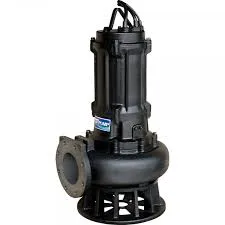English
- Afrikaans
- Albanian
- Amharic
- Arabic
- Armenian
- Azerbaijani
- Basque
- Belarusian
- Bengali
- Bosnian
- Bulgarian
- Catalan
- Cebuano
- Corsican
- Croatian
- Czech
- Danish
- Dutch
- English
- Esperanto
- Estonian
- Finnish
- French
- Frisian
- Galician
- Georgian
- German
- Greek
- Gujarati
- Haitian Creole
- hausa
- hawaiian
- Hebrew
- Hindi
- Miao
- Hungarian
- Icelandic
- igbo
- Indonesian
- irish
- Italian
- Japanese
- Javanese
- Kannada
- kazakh
- Khmer
- Rwandese
- Korean
- Kurdish
- Kyrgyz
- Lao
- Latin
- Latvian
- Lithuanian
- Luxembourgish
- Macedonian
- Malgashi
- Malay
- Malayalam
- Maltese
- Maori
- Marathi
- Mongolian
- Myanmar
- Nepali
- Norwegian
- Norwegian
- Occitan
- Pashto
- Persian
- Polish
- Portuguese
- Punjabi
- Romanian
- Russian
- Samoan
- Scottish Gaelic
- Serbian
- Sesotho
- Shona
- Sindhi
- Sinhala
- Slovak
- Slovenian
- Somali
- Spanish
- Sundanese
- Swahili
- Swedish
- Tagalog
- Tajik
- Tamil
- Tatar
- Telugu
- Thai
- Turkish
- Turkmen
- Ukrainian
- Urdu
- Uighur
- Uzbek
- Vietnamese
- Welsh
- Bantu
- Yiddish
- Yoruba
- Zulu
Telephone: +86 13120555503
Email: frank@cypump.com
Nov . 30, 2024 03:59 Back to list
septic transfer pump
Understanding Septic Transfer Pumps A Comprehensive Guide
When it comes to managing wastewater in rural areas or homes not connected to a municipal sewage system, septic systems play an essential role. At the heart of these systems is a crucial component known as the septic transfer pump. This article aims to provide a comprehensive understanding of septic transfer pumps, their function, importance, and maintenance.
What is a Septic Transfer Pump?
A septic transfer pump, also known as an effluent or sewage pump, is designed to transport effluent from a septic tank to a drain field or another location for further treatment or disposal. These pumps are critical in situations where gravity alone cannot move the wastewater effectively. They are typically submersible and are built to handle both liquid and solid waste, though some are specialized for only certain types of effluent.
How Does a Septic Transfer Pump Work?
The operation of a septic transfer pump is straightforward. After wastewater flows into the septic tank, solids settle to the bottom, forming sludge, while lighter materials float to the top, forming scum. The liquid effluent between these layers is directed to the pump. When the liquid reaches a certain level within the pump chamber, a float switch activates the pump, pushing the effluent into the leach field or a secondary treatment system.
The pump utilizes an electric motor and impeller system to create pressure, moving the liquid waste. This pumping process is continuous as long as the waste level remains high enough to trigger the float switch, ensuring that the septic tank does not overflow.
Importance of Septic Transfer Pumps
Septic transfer pumps are vital for several reasons
1. Preventing System Failures A well-functioning transfer pump helps prevent the overflow or backup of sewage, which can lead to unsanitary conditions and health hazards.
2. Maintaining System Efficiency Regularly functioning pumps ensure that wastewater is efficiently transported and treated, maintaining the longevity and efficiency of the septic system overall.
septic transfer pump

3. Flexibility in Installation In cases where the drain field is located uphill from the septic tank, a transfer pump is often the only solution for effective wastewater disposal.
4. Environmental Protection Properly handled wastewater reduces the risk of contamination to surrounding soil and water systems, ensuring compliance with local environmental regulations.
Maintenance Tips for Septic Transfer Pumps
Like any mechanical system, septic transfer pumps require regular maintenance to function effectively. Here are some essential maintenance tips
1. Regular Inspections Check the pump at least once a year for any signs of wear, damage, or debris that could hinder its operation.
2. Clean the Inlets and Outlets Ensure that the inlet and outlet ports are free from clogs or blockages. This will ensure smooth operation and efficient pumping.
3. Test the Float Switch Regularly test the float switch to ensure it is operating correctly. A stuck switch can lead to pump failure or overflow situations.
4. Professional Servicing Consider having a professional inspect and service your septic system regularly, including the transfer pump, to catch any issues before they become significant problems.
5. Avoid Overloading Ensure that the septic system is not overloaded with excessive waste or non-biodegradable materials, which could damage the pump and the entire system.
Conclusion
Septic transfer pumps are a fundamental component of effective wastewater management in off-grid locations. Understanding their function, importance, and maintenance requirements can help homeowners ensure that their septic systems operate smoothly. By taking proactive steps in maintenance and monitoring, you can extend the lifespan of your septic system and promote a healthier environment for everyone. Remember, a well-maintained septic system not only serves your household but also protects the community and ecosystem around you.
-
ISG Series Vertical Pipeline Pump - Chi Yuan Pumps | Advanced Engineering&Industrial Efficiency
NewsJul.30,2025
-
ISG Series Pipeline Pump - Chi Yuan Pumps | High Efficiency, Energy Saving
NewsJul.30,2025
-
ISG Series Vertical Pipeline Pump-Chi Yuan Pumps|High Efficiency&Reliable Performance
NewsJul.29,2025
-
ISG Series Vertical Pipeline Pump|High Efficiency&Low Noise
NewsJul.29,2025
-
ISG Series Vertical Pipeline Pump - Chi Yuan Pumps Co., LTD.|High Efficiency, Energy Conservation, Low Noise
NewsJul.29,2025
-
ISG Series Vertical Pipeline Pump-Chi Yuan Pumps Co., LTD.|High Efficiency&Energy-Saving
NewsJul.29,2025










